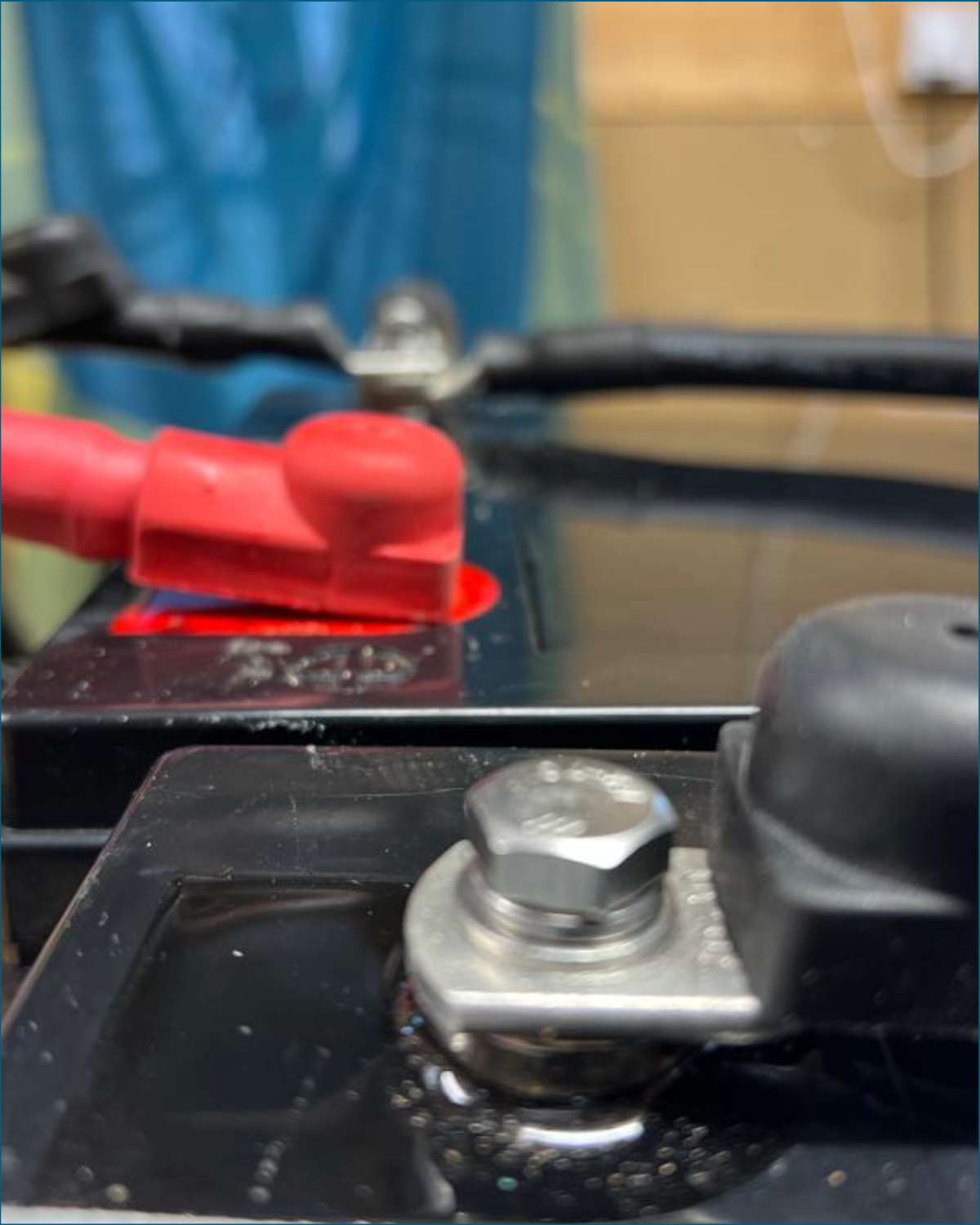What is an inverter generator? Find out in this easy-to-understand guide! Learn how it works, its benefits, and how it can improve your RV experience. Get expert advice and practical tips today!
Inverter generators are a relatively new type of portable generator that has become increasingly popular in recent years.
They offer several advantages over traditional generators, such as improved fuel efficiency, portability, and low noise levels.
In this article, we’ll explore the technology behind inverter generators, how they differ from conventional generators and their benefits.
What Is An Inverter Generator?
Inverter generators were first developed in the 1980s to provide a more efficient and quieter power source for recreational vehicles (RVs).
Since then, they have become increasingly popular in various applications, including camping trips and outdoor activities.
An inverter generator combines an engine-driven alternator and an electronic inverter module.
The alternator produces AC power which is then converted into DC power by the inverter module before being inverted back into AC power for use.
This process produces cleaner electricity with fewer fluctuations than a traditional generator, making them ideal for powering sensitive electronics like computers and cell phones.
How Does An Inverter Generator Work?
An inverter generator converts DC electrical current to AC electrical current using its built-in inverter module.
This process is known as “inversion” or “inverting” because it changes the direction of the current flow from DC to AC.
The inverter module also regulates the voltage output to remain consistent regardless of load size or speed changes.
This helps reduce fluctuations in power output which can damage sensitive electronics like laptops or TVs.
Additionally, inverters are designed to be much quieter than traditional generators due to their variable speed engines, which automatically adjust their RPMs depending on the load size.
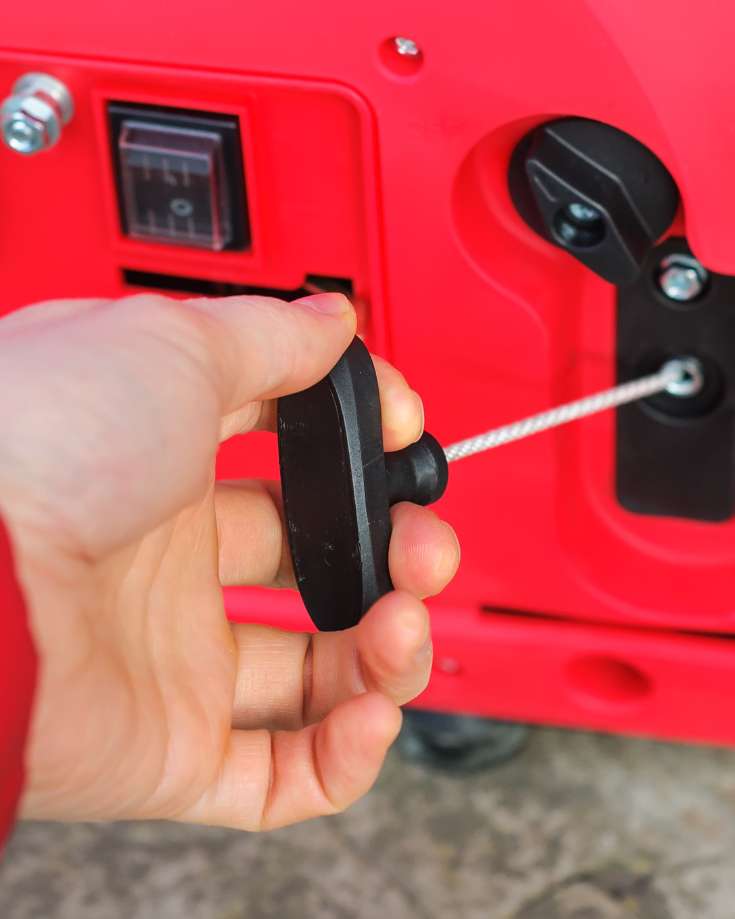
Benefits Of Using An Inverter Generator In An RV
There are several benefits to using an inverter generator over a conventional generator:
Fuel Efficiency
Inverter generators are much more fuel efficient than traditional generators due to their variable speed engines, which automatically adjust their RPMs depending on the load size.
This means you can get more power out of less fuel than conventional models.
Portability
Inverters are typically much smaller and lighter than conventional models due to their compact design and lightweight materials used in construction.
This makes them perfect for camping trips or other outdoor activities where space is limited but reliable power sources are needed.
Low Noise Levels
One of the most significant advantages of using an inverter generator is its low noise level compared to traditional models, which can be loud when running at full capacity.
This makes them ideal for use in campgrounds and RV parks where noise pollution needs to be minimal or when camping in areas with strict noise regulations, such as national parks or wilderness areas.
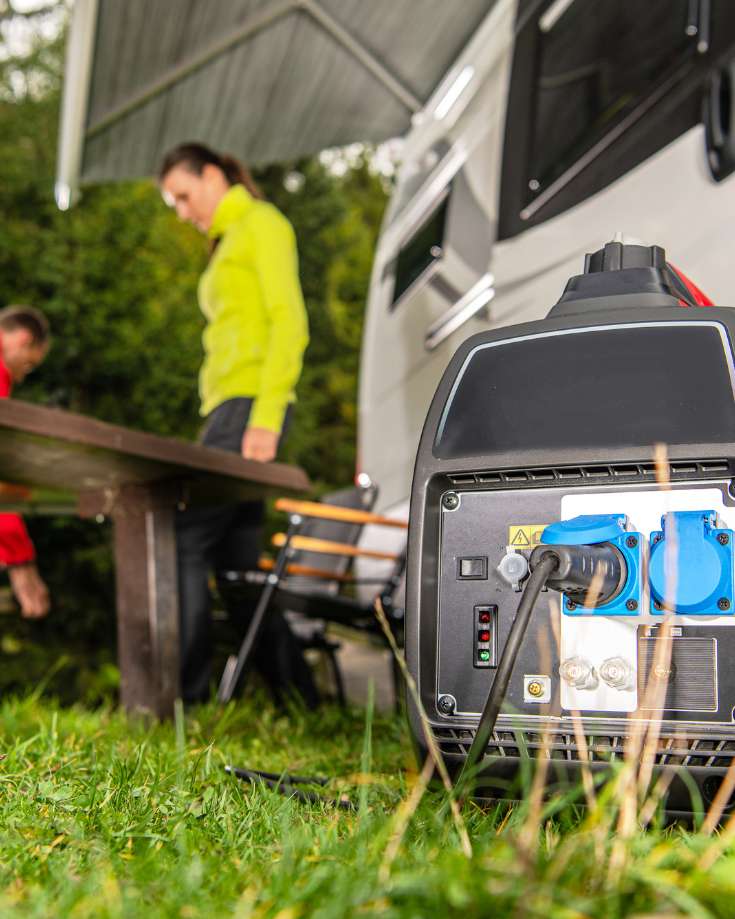
Versatility
Finally, inverters are highly versatile.
Because they regulate voltage output, they can be used for powering small appliances like TVs or laptops and larger items like air conditioners or refrigerators without any difficulty.
Disadvantages of Inverter Generators
Inverter generators are an excellent choice for RVers but have some drawbacks.
Higher Cost
Initial Investment
Inverter generators tend to be more expensive than traditional generators due to their advanced technology and features.
The initial investment can be a significant drawback for RVers on a budget, even though the long-term fuel savings and other benefits may offset the higher upfront cost.
Replacement Parts and Repairs
Inverter generators have more complex internal components than traditional generators, making repairs more expensive and challenging.
Additionally, replacement parts can be more costly than those for traditional generators.
This can lead to higher long-term maintenance costs for RVers who rely on their generator frequently.
Maintenance Requirements
Regular Cleaning and Inspection
Inverter generators require regular maintenance to ensure optimal performance and longevity.
This includes:
- cleaning the air filter,
- checking the oil level, and
- inspecting the spark plug.
While these tasks may be simple, they can be time-consuming and inconvenient for RVers on the road frequently.
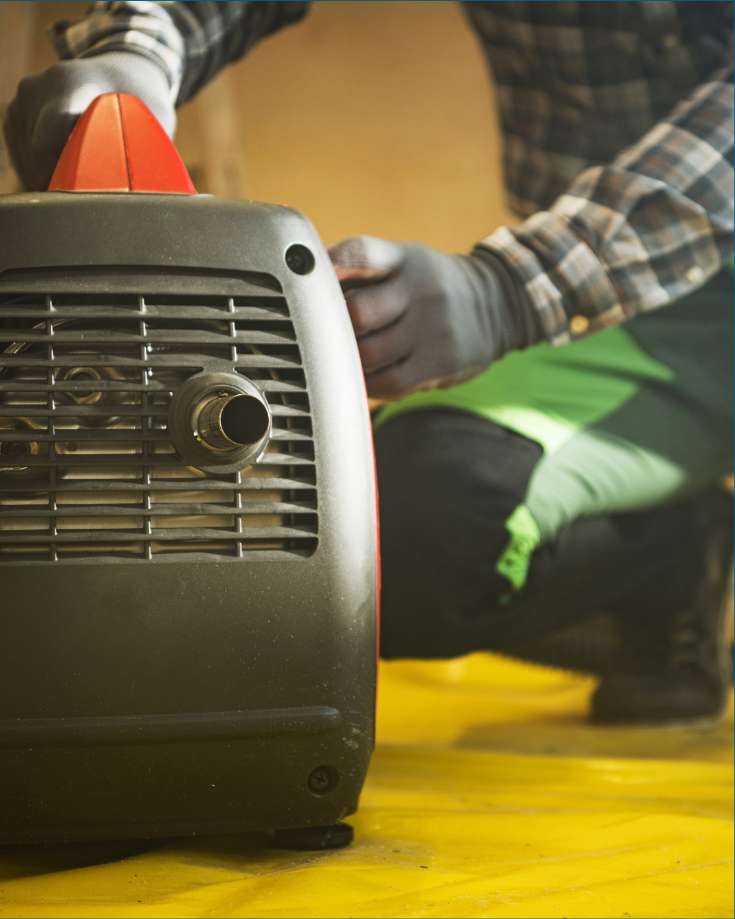
Sensitive to Fuel Quality
Inverter generators are more sensitive to fuel quality than traditional generators.
They require clean, fresh gasoline to function optimally. Stale or contaminated fuel can cause performance issues, damage the engine, or even void the warranty.
As a result, RVers must be diligent about using high-quality fuel and properly storing it to avoid potential problems.
Limited Power Output
Comparatively Lower Wattage
One of the primary drawbacks of inverter generators is their limited power output compared to traditional generators.
Most inverter generators are designed for portability and efficiency, so they usually have a lower wattage output.
Where some conventional generators can produce tens of thousands of watts, the largest inverter generator comes in at less than 10000 watts.
That said, only so many of us RVers would need anything close to 10000 watts.
But, if you’re one of them, connecting multiple generators in parallel is possible.
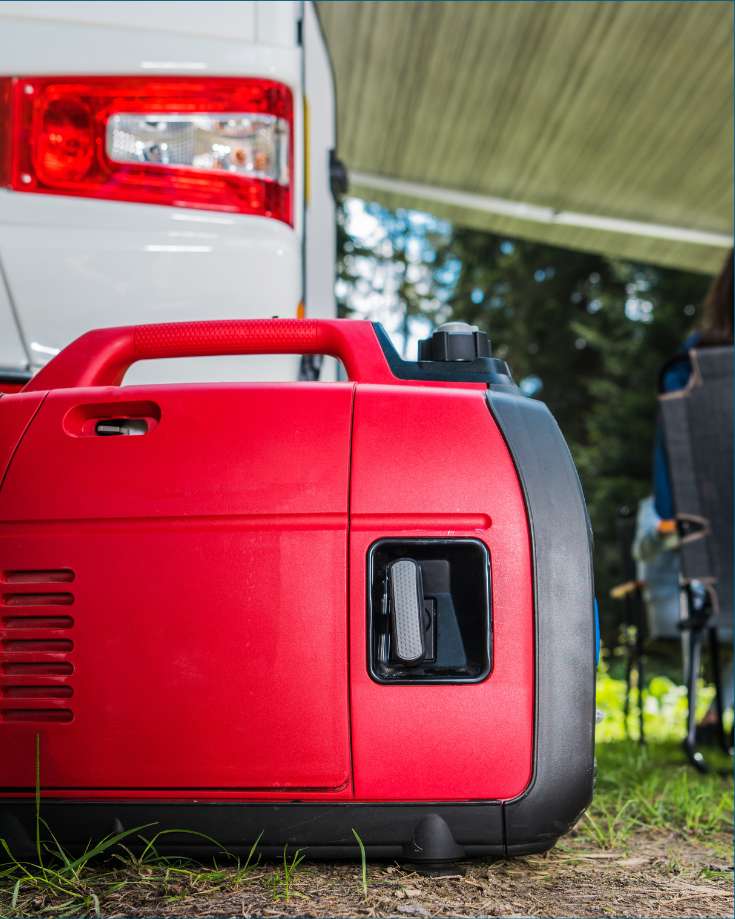
Parallel Capability Required for Higher Power Needs
If you have higher power needs, you may need to invest in two inverter generators and connect them using a parallel kit.
This can be an expensive and cumbersome solution, especially if you need to transport and store two generators.
Examples Of How To Use An Inverter Generator Effectively
Inverter generators can be effectively used in various situations, such as camping trips, tailgating parties, outdoor events, etc.
They’re handy for RVers who need reliable yet quiet power sources while on the go since most campgrounds don’t provide hookups for RVs with regular outlets like those found at home.
Additionally, some models come equipped with USB ports, so you can quickly charge your devices without worrying about finding compatible outlets everywhere!
How to Size an Inverter Generator
Before you make a purchase, knowing how to size an inverter generator correctly is essential.
Sizing an inverter generator correctly is essential if you want reliable performance and optimal efficiency from your unit.
By following these steps carefully and researching beforehand, you can be sure you have chosen the right size generator for whatever application you need!
Here are the three steps for calculating the right size generator for your needs.
Step 1: Calculate Your Power Output Needs
Calculating your power output needs is the first step in sizing an inverter generator.
To do this, add the wattage of all the appliances and devices you plan to use simultaneously with your generator.
It’s important to note that some items may require more than their rated wattage when first turned on (known as surge power).
Make sure to include these additional watts in your calculations.
You should also consider voltage requirements when calculating your power needs.
Most inverter generators run on 120 volts, but some may require more or less depending on the device you plan to plug into.
Step 2: Decide What Current Rating You Need
When it comes to determining the current rating of your RV, there are a few steps you can take.
First, check your RV’s electrical panel for labels that indicate the amperage rating.
This may be labeled as 30 amp or 50 amp. You can also look at the power cord and plug that connects your RV to the power source if it is not labeled.
A 30-amp plug will have three prongs – two straight blades and one round pin – while a 50-amp plug will have four prongs – two straight blades and two round pins.
Finally, if you still cannot determine the amperage rating of your RV, you can contact an electrician or RV technician for assistance.
Step 3: Select Your Generator Size
Now that you have calculated your power output needs, it’s time to select the generator size that will meet those needs.
As a general rule of thumb, choose an inverter generator with 10-20% more capacity than you calculated in Step 1; this will give you some leeway if any unexpected surges occur or other factors come into play (such as altitude).
Once you’ve selected the right size generator, double-check its features and specifications before purchasing.
Can Inverter Generators Be Used Indoors?
Inverter generators are an excellent choice for powering your RV. They are quieter, more efficient, and more portable than a traditional generator.
However, it is essential to remember that inverter generators should not be used indoors due to the risk of carbon monoxide poisoning.
Inverter generators produce less exhaust than traditional generators, but they still need to be operated outdoors in a well-ventilated area.
Do You Need A Transfer Switch For An Inverter Generator In An RV?
A transfer switch isn’t always required when connecting a generator to your RV, but it is highly recommended for safety and convenience.
A transfer switch is an electrical device that allows you to safely switch between two power sources, such as your generator and shore power (power from an external source, like an RV park).
It ensures your RV’s electrical system remains protected and prevents overloading or potential damage.
Here is a summary of some of the significant benefits:
- Safety: A transfer switch eliminates the risk of backfeeding, which occurs when power from the generator flows back into the electrical grid. Backfeeding can be hazardous and can cause damage to your RV’s electrical system.
- Convenience: With a transfer switch installed, you can easily switch between power sources without manually unplugging and replugging cords. This simplifies the process and reduces the risk of accidents or damage to your RV’s electrical system.
- Compliance with Electrical Codes: In some jurisdictions, a transfer switch is required by electrical codes for safety reasons. Installing one ensures that you adhere to these regulations and keep your RV up to code.
- Proper Power Management: A transfer switch helps manage your RV’s power consumption by automatically switching between power sources based on your needs. This can prevent overloading your generator or your RV’s electrical system.
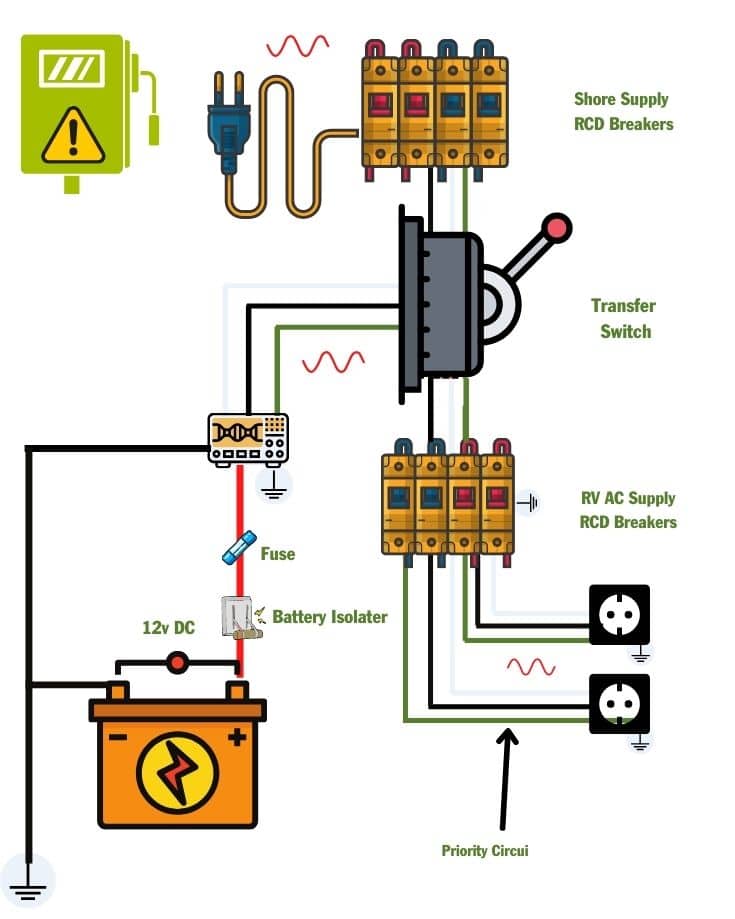
How To Connect An Inverter Generator To Your RV
Connecting an inverter generator to your RV can provide a reliable power source when camping off-grid or shore power is unavailable.
Follow these simple and practical steps to connect an inverter generator to your RV safely:
Step 1: Gather The Required Tools & Materials
Before starting, ensure you have the following items:
- Inverter generator
- Suitable generator cord (typically a 30-amp or 50-amp cord)
- Heavy-duty extension cord (if needed)
- Transfer switch fitted (optional, but recommended for safety)
- Multimeter (to check power output)
Step 2: Select A Safe Location For The Generator
Place the generator outdoors in a well-ventilated area, at least 5 feet away from any openings (windows, doors, vents), to prevent exhaust fumes from entering the RV.
Ensure the generator is on a stable, level surface to minimize vibrations and enable proper operation.
Step 3: Prepare The Generator
If you’re using the generator for the first time, or haven’t carried out maintenance tasks on it for a while, check the oil and fuel levels and secure all connections before starting the generator.
Familiarize yourself with the generator’s controls and safety features, such as the circuit breaker and low-oil shutdown feature.
Step 4: Connect The Generator Cord
Plug one end of the generator cord into the generator’s output receptacle, ensuring a secure connection.
Connect the other end of the cord to your RV’s power input directly or through an appropriate extension cord.
Step 5: Check Your Transfer Switch
If you’re RV is fitted with a transfer switch, follow the manufacturer’s instructions to ensure it’s safe to turn on the generator.
If you don’t have a transfer switch fitted, disconnect your RV from any AC power supply, like shore power.
Step 6: Start the Generator
Follow the manufacturer’s instructions to start the generator.
Once running smoothly, you could use the multimeter to confirm that the generator produces the correct voltage for your RV’s electrical system (usually 120 volts).
Step 7: Power Your RV’s Appliances & Devices
With the generator running and connected to your RV, turn on your RV’s electrical appliances and devices.
Start with the largest appliances (such as air conditioners or microwaves) and work down to smaller devices.
Step 8: Monitor the Generator
Periodically check the generator’s operation, fuel, and oil levels while in use. If you encounter any issues, consult the user manual or the manufacturer for assistance.
Prioritize safety and adhere to the manufacturer’s guidelines for using and maintaining the generator.
How To Choose An Inverter Generator
When choosing an inverter generator, there are several factors to consider.
First, you should determine the size and type of generator that best suits your needs.
Inverter generators come in various sizes and types, from small portable units to larger stationary models.
The size and type of generator you choose will depend on how much power you need and how often you plan to use it.
Next, consider the features offered by different models.
Some inverter generators offer additional features such as:
- fuel shut-off,
- digital displays, and
- surge protection.
These features help ensure your generator runs smoothly and safely when needed.
When it comes to noise levels, it is important to understand that all generators make some noise when running.
However, inverter generators are designed to be much quieter than traditional portable generators due to their advanced technology.
Manufacturers include the decibel rating of each model in their specifications.
Finally, look at the cost of the generator and compare it to other models on the market.
Inverter generators can range in price from a few hundred dollars to thousands of dollars, depending on size and features.
Be sure to factor in any additional costs, such as installation fees or maintenance costs, when making your decision.
Choosing an inverter generator can be overwhelming, but with some research and careful consideration, you can find one that meets your needs perfectly!
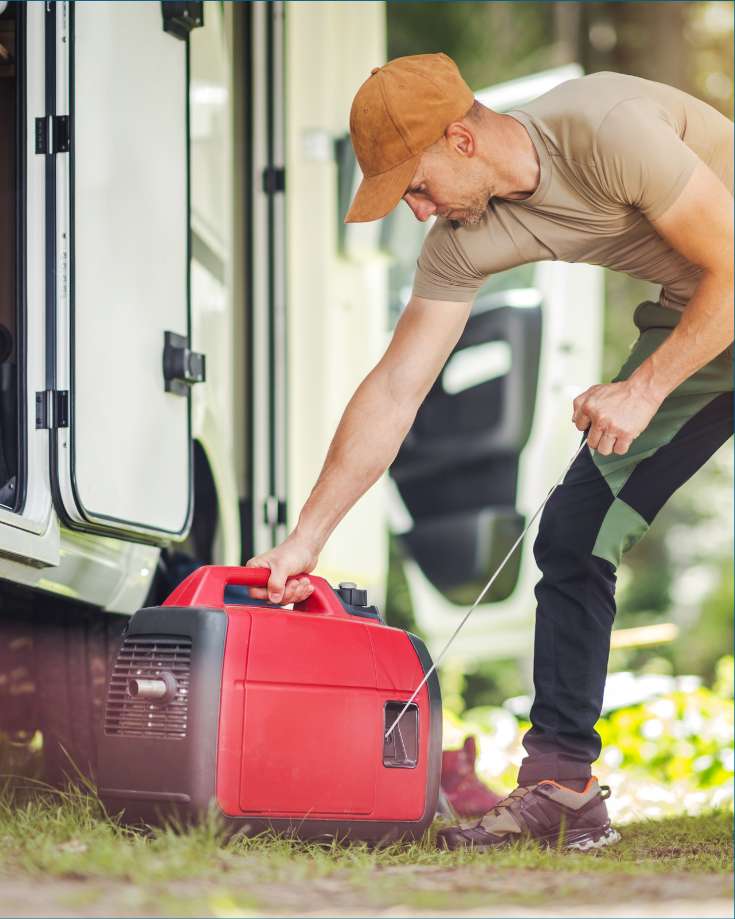
Is There A Silent Power Generator That Doesn’t Use Fuel?
Unfortunately, the answer is no. Well, kind of.
Fuel-powered generators are inherently noisy due to their combustion engines. So, there’s no way to make them completely silent.
However, some models are much quieter than others, which is why considering the decibel level is a crucial factor when choosing one.
You can check out our review of the quietest generators for RVers here.
Solar Generators
Solar generators are powered by energy from the sun, meaning they don’t need fuel or produce emissions.
They are also completely silent – aside from the fan that kicks in occasionally to keep it cool.
However, don’t be fooled by its name.
A solar generator is not an alternative to an inverter or conventional generator.
In fact, all it really is is a portable solar system and lithium battery.
Please understand us; solar generators are brilliant but won’t run your RV’s AC circuits.
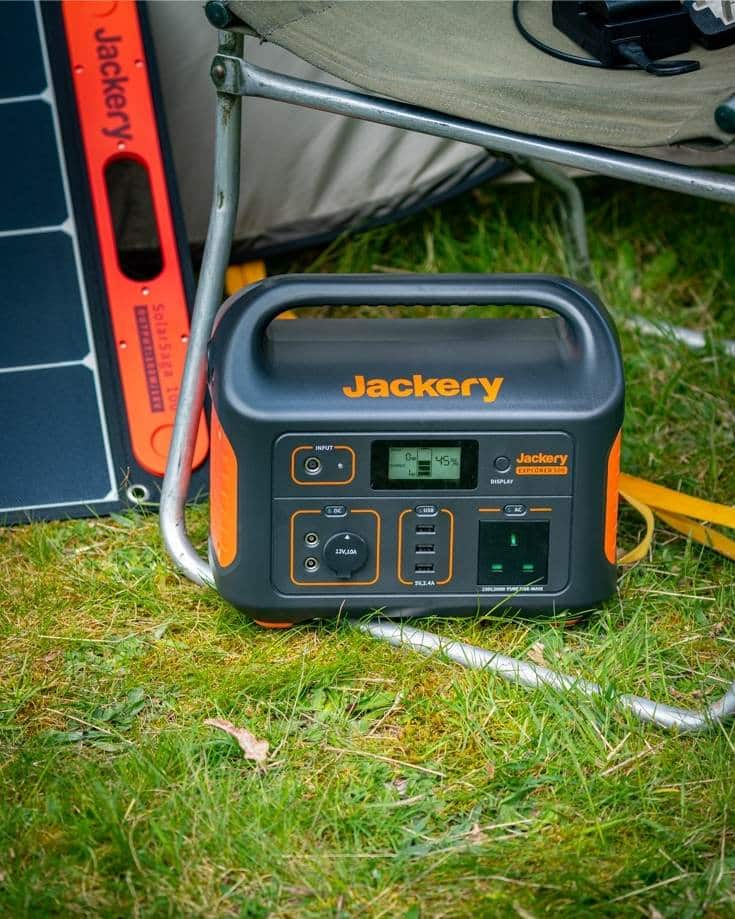
In Conclusion
In conclusion, investing in a portable inverter generator can provide many benefits over traditional models, such as improved fuel efficiency, portability, low noise levels, and versatility, making them perfect for RVers who need reliable yet quiet power sources while on the go!
With proper maintenance, they should last many years, so if you’re looking for a quality product that meets all your power needs, then an inverter generator does the job!
Share your thoughts, questions, or personal experiences with inverter generators in the comments below. Our community of RV enthusiasts is eager to learn from each other and help you make the best decision for your next adventure. Leave a comment now and join the conversation!
Graham Bogie

Graham is a seasoned marine electrical engineer with two decades of experience designing customized electrical systems for plant machinery and converting campers and overland vehicles. His expertise has led him to author the reputable Campervan Electrics Handbook and become the chief designer of the RV Wiring Design Tool. As a knowledgeable figure in the field, his YouTube channel, blog, Facebook group, and newsletter, offering electrical advice and product reviews, reach more than a million users each year.


